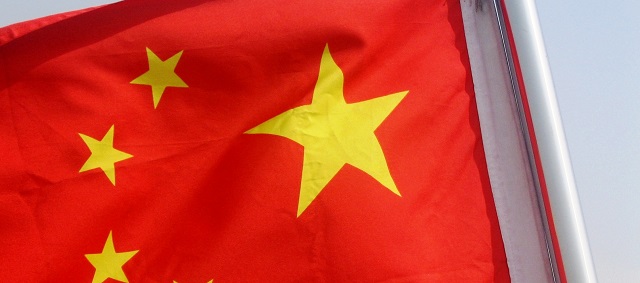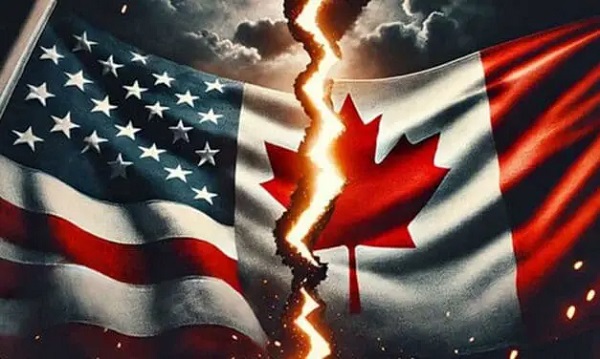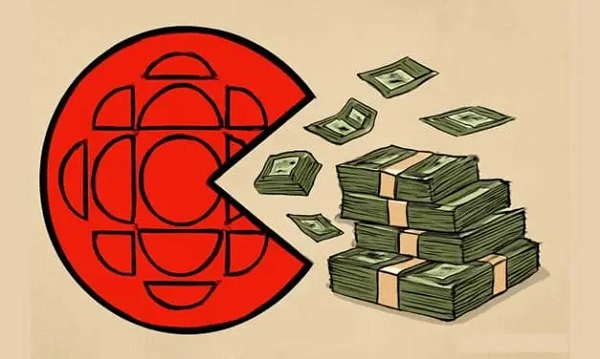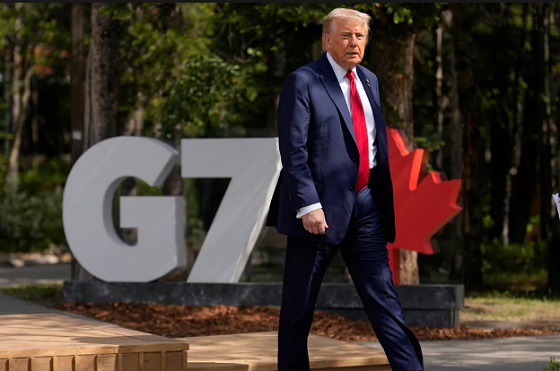Business
EXCLUSIVE: Former Biden Climate Czar Apparently Pushed Homeland Security To Ease Up On Chinese Company Linked To Slave Labor


From the Daily Caller News Foundation
By Nick Pope
Then-national climate adviser Gina McCarthy appears to have met directly with Department of Homeland Security (DHS) Secretary Alejandro Mayorkas in 2021 to urge him to ease up on a Chinese solar company linked to slave labor, according to documents obtained by Protect the Public’s Trust, a government watchdog group.
A pre-meeting primer prepared for Mayorkas by staff to get him ready to meet with McCarthy in June 2021 states that McCarthy would “likely discuss the concerns the solar industry has regarding the Department’s enforcement posture on solar products, particularly with regard to Hoshine Silicon Products Company.” The meeting, which McCarthy requested, was scheduled to take place several days after DHS issued a “Withhold Release Order” (WRO) to customs officials to begin seizing shipments of Hoshine solar products because of its connections to slave labor in China’s Xinjiang region, an area known as ground zero for the Chinese government’s genocidal repression of Uyghur Muslims.
DHS still lists Hoshine Silicon Industry and its subsidiaries as entities manufacturing products that use slave labor in violation of the Uyghur Forced Labor Prevention Act.
“The impacts of the Hoshine Withold (sic) Release Order (WRO) include the detention of goods and their effect on consumer and investor confidence in solar products, projects, and the industry; concern is growing that this will affect the industry’s ability to meet the nation’s clean energy goals,” the primer for Mayorkas reads.
PPT Documents – Hoshine + DHS by Nick Pope
“Industry indicates that the Hoshine WRO limits their ability to meet demand for solar panels without liability,” the memo continues. “Industry expressed that the WRO’s impact on consumer and investor confidence has resulted in cancelled orders and investments and has put jobs at risk.”
Chinese companies dominate the global supply chains for green energy products including solar panels, and a large share of the world’s polysilicon — a key ingredient for the production of solar panels — comes from the Xinjiang region specifically, The New York Times reported in June 2021 following the announcement of the Hoshine WRO. The Hoshine WRO illustrates a wider problem for the Biden administration whereby it works to cut China and Chinese slave labor-tied companies out of the U.S. solar supply chain without going too far and suffocating American solar companies that rely on Chinese component parts at the expense of the government’s lofty long-term green energy goals.
For example, about one year after the scheduled Mayorkas-McCarthy meeting, the Biden administration opted to waive tariffs on Chinese solar products in June 2022 amid concerns that the levies could crush the American solar industry before reinstating the duties in June 2024. Some American solar firms and executives said that Chinese companies managed to undercut U.S. solar production during the period of time when the tariffs were not being enforced.
Mayorkas stated publicly that “the United States will not tolerate modern-day slavery in our supply chains” on the day DHS announced the WRO against Hoshine.
The memo briefed Mayorkas on several options that McCarthy was likely to bring up at the meeting, including possible proposals to phase in enforcement to reassure the spooked market, increase transparency for the public with respect to DHS’ Hoshine restrictions or to create a “de minimis” threshold for the amount of slave labor-linked polysilicon in a given imported product. Mayorkas’ staff also laid out detailed “pros” and “cons” for each of the suggestions they expected McCarthy to make in the meeting.
“DHS made a rational and moral judgement about products from a company and a nation that uses the forced labor of Uyghurs and other ethnic and political prisoners,” Michael Chamberlain, executive director of Protect the Public’s Trust, told the Daily Caller News Foundation. “But it seems human rights are a secondary consideration for the people charged with implementing the Biden administration’s green agenda and their counterparts in the clean energy industry. It’s hard to see what’s ‘clean’ about solar panels made with slave labor.”
McCarthy, who was the head of the Environmental Protection Agency (EPA) for the Obama administration, served as the Biden administration’s national climate adviser before leaving the government in 2022. In between her stints in the Obama and Biden administrations, McCarthy worked as the president of the Natural Resources Defense Council (NRDC), a major environmental activist group that has a presence in China and is registered with or supervised by Chinese government institutions like the Beijing Municipal Public Security Bureau and the State Forestry and Grassland Administration, according to NRDC’s Chinese language website.
Notably, the documents obtained by Protect the Public’s Trust also include a similar briefing memo meant to prepare him for an October 2021 meeting with the American Clean Power Association about DHS’ enforcement actions against slave labor-linked solar products. That particular document spells out how representatives for the green energy trade group were likely to push for answers about the administration’s conflicting goals of rooting out slave labor from solar supply chains and quickly standing up a robust domestic solar industry.
DHS and McCarthy’s spokesperson did not respond to multiple requests for comment from the DCNF.
Business
Rhetoric—not evidence—continues to dominate climate debate and policy

From the Fraser Institute
Myths, fallacies and ideological rhetoric continue to dominate the climate policy discussion, leading to costly and ineffective government policies,
according to a new study published today by the Fraser Institute, an independent, nonpartisan Canadian public policy think-tank.
“When considering climate policies, it’s important to understand what the science and analysis actually show instead of what the climate alarmists believe to be true,” said Kenneth P. Green, Fraser Institute senior fellow and author of Four Climate Fallacies.
The study dispels several myths about climate change and popular—but ineffective—emission reduction policies, specifically:
• Capitalism causes climate change: In fact, according to several environment/climate indices and the Fraser Institute’s annual Economic Freedom of the World Index, the more economically free a country is, the more effective it is at protecting its environment and combatting climate change.
• Even small-emitting countries can do their part to fight climate change: Even if Canada reduced its greenhouse gas emissions to zero, there would be
little to no measurable impact in global emissions, and it distracts people from the main drivers of emissions, which are China, India and the developing
world.
• Vehicle electrification will reduce climate risk and clean the air: Research has shown that while EVs can reduce GHG emissions when powered with
low-GHG energy, they often are not, and further, have offsetting environmental harms, reducing net environmental/climate benefits.
• Carbon capture and storage is a viable strategy to combat climate change: While effective at a small scale, the benefits of carbon capture and
storage to reduce global greenhouse gas emissions on a massive scale are limited and questionable.
“Citizens and their governments around the world need to be guided by scientific evidence when it comes to what climate policies make the most sense,” Green said.
“Unfortunately, the climate policy debate is too often dominated by myths, fallacies and false claims by activists and alarmists, with costly and ineffective results.”

Kenneth P. Green
Senior Fellow, Fraser Institute
Business
Canada’s economic pain could be a blessing in disguise

This article supplied by Troy Media.
 By Roslyn Kunin
By Roslyn Kunin
Tariffs, inflation, and falling incomes sound bad, but what if they’re forcing us to finally fix what’s broken?
Canada is facing serious economic headwinds—from falling incomes to rising inflation and U.S. trade hostility—but within this turmoil lies an opportunity. If we respond wisely, this crisis could become a turning point, forcing long-overdue reforms and helping us build a stronger, more independent economy.
Rather than reacting out of frustration, we can use these challenges to reassess what’s holding us back and move forward with practical solutions. From
trade policy to labour shortages and energy development, there are encouraging shifts already underway if we stay focused.
A key principle when under pressure is not to make things worse for ourselves. U.S. tariffs on Canadian steel and aluminum, and the chaotic renegotiation of NAFTA/CUSMA, certainly hurt our trade-dependent economy. But retaliatory tariffs don’t work in our favour. Canadian imports make
up a tiny fraction of the U.S. economy, so countermeasures barely register there, while Canadian consumers end up paying more. The federal government’s own countertariffs on items like orange juice and whisky raised costs here without changing American policy.
Fortunately, more Canadians are starting to realize this. Some provinces have reversed bans on U.S. goods. Saskatchewan, for example, recently lifted
restrictions on American alcohol. These decisions reflect a growing recognition that retaliating out of pride often means punishing ourselves.
More constructively, Canada is finally doing what should have happened long ago: diversifying trade. We’ve put too many economic eggs in one
basket, relying on an unpredictable U.S. market. Now, governments and businesses are looking for buyers elsewhere, an essential step toward greater stability.
At the same time, we’re starting to confront domestic barriers that have held us back. For years, it’s been easier for Canadian businesses to trade with the U.S. than to ship goods across provincial borders. These outdated restrictions—whether on wine, trucks or energy—have fractured our internal market. Now, federal and provincial governments are finally taking steps to create a unified national economy.
Labour shortages are another constraint limiting growth. Many Canadian businesses can’t find the skilled workers they need. But here, too, global shifts
are opening doors. The U.S.’s harsh immigration and research policies are pushing talent elsewhere, and Canada is emerging as the preferred alternative.
Scientists, engineers and graduate students, especially in tech and clean energy, are increasingly choosing Canada over the U.S. due to visa uncertainty and political instability. Our universities are already benefiting. If we continue to welcome international students and skilled professionals, we’ll gain a long-term advantage.
Just as global talent is rethinking where to invest their future, Canada has a chance to reassert leadership in one of its foundational industries: energy.
The federal government is now adopting a more balanced climate policy, shifting away from blanket opposition to carbon-based energy and focusing instead on practical innovation. Technologies such as carbon capture and storage are reducing emissions and helping clean up so-called dirty oil. These cleaner energy products are in demand globally.
To seize that opportunity, we need infrastructure: pipelines, refining capacity and delivery systems to get Canadian energy to world markets and across our own country. Projects like the Trans Mountain pipeline expansion, along with east-west grid connections and expanded refining, are critical to reducing dependence on U.S. imports and unlocking Canada’s full potential.
Perhaps the most crucial silver lining of all is a renewed awareness of the value of this country. As we approach July 1, more Canadians are recognizing how fortunate we are. Watching the fragility of democracy in the U.S., and confronting the uncomfortable idea of being reduced to a 51st state, has reminded us that Canada matters. Not just to us, but to the world.
Dr. Roslyn Kunin is a respected Canadian economist known for her extensive work in economic forecasting, public policy, and labour market analysis. She has held various prominent roles, including serving as the regional director for the federal government’s Department of Employment and Immigration in British Columbia and Yukon and as an adjunct professor at the University of British Columbia. Dr. Kunin is also recognized for her contributions to economic development, particularly in Western Canada.
Troy Media empowers Canadian community news outlets by providing independent, insightful analysis and commentary. Our mission is to support local media in helping Canadians stay informed and engaged by delivering reliable content that strengthens community connections and deepens understanding across the country.
-

 Energy2 days ago
Energy2 days agoKananaskis G7 meeting the right setting for U.S. and Canada to reassert energy ties
-

 Business2 days ago
Business2 days agoCarney’s Honeymoon Phase Enters a ‘Make-or-Break’ Week
-

 Aristotle Foundation2 days ago
Aristotle Foundation2 days agoThe Canadian Medical Association’s inexplicable stance on pediatric gender medicine
-

 Alberta2 days ago
Alberta2 days agoAlberta announces citizens will have to pay for their COVID shots
-

 conflict2 days ago
conflict2 days agoIsrael bombs Iranian state TV while live on air
-

 Business2 days ago
Business2 days agoCarney praises Trump’s world ‘leadership’ at G7 meeting in Canada
-

 Business23 hours ago
Business23 hours agoThe CBC is a government-funded giant no one watches
-

 conflict1 day ago
conflict1 day agoTrump leaves G7 early after urging evacuation of Tehran






